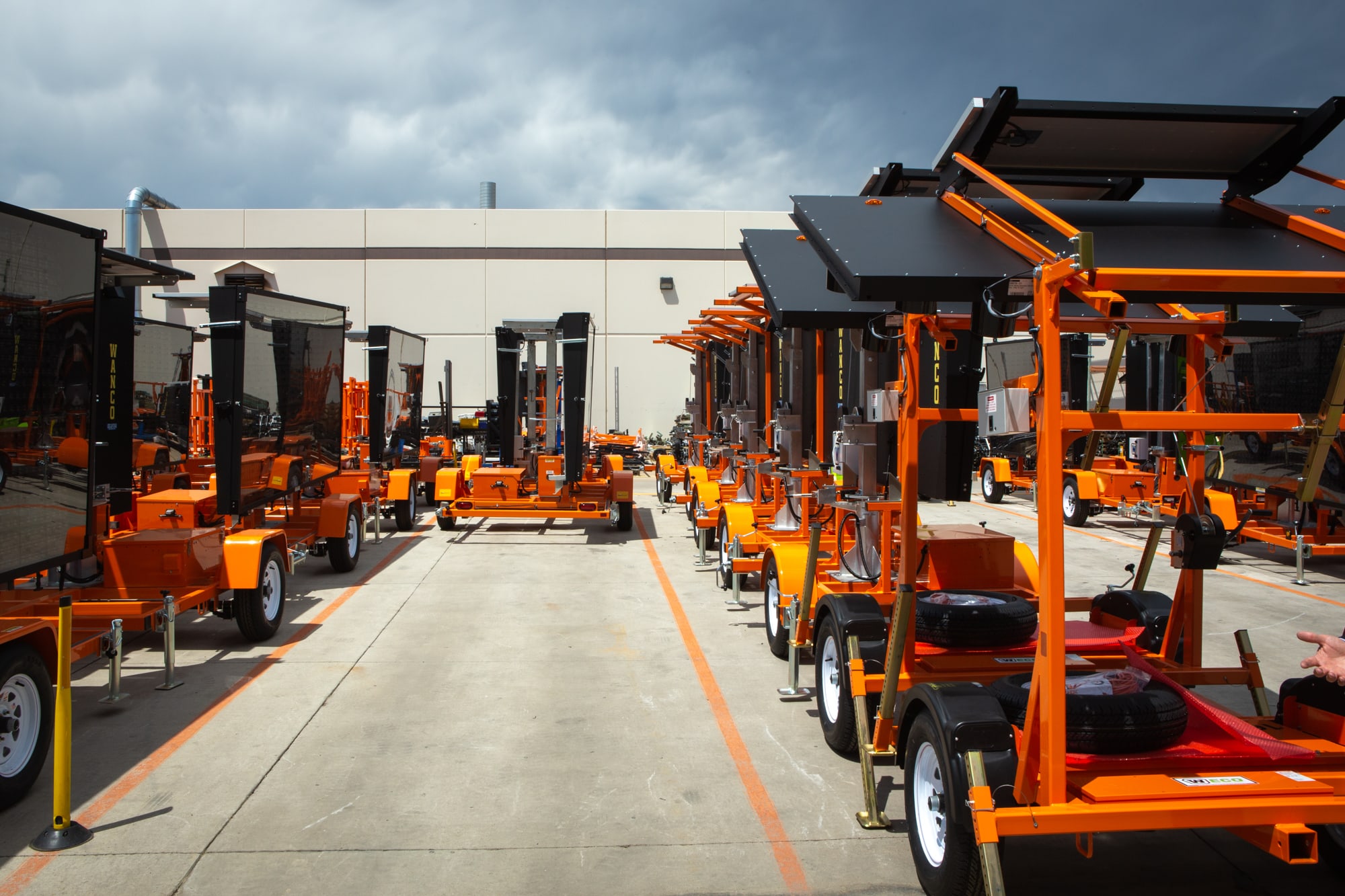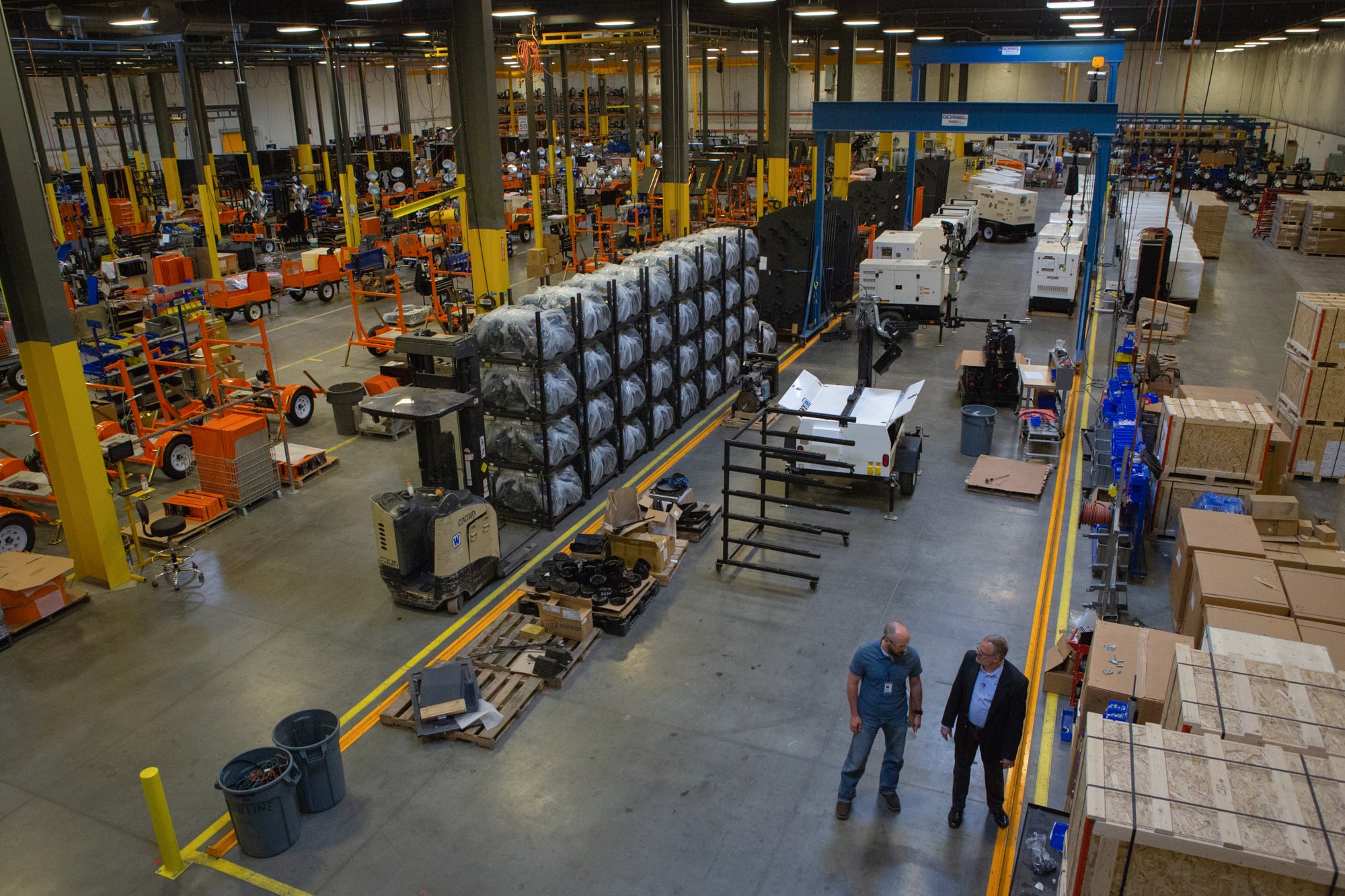FEMA still struggles with pre-disaster planning
PHOENIX – Over the past decade, the Federal Emergency Management Agency has doled out tens of billions of dollars in contracts to U.S. companies for food, blankets, tarps, bottled water, debris removal and other crucial goods and services needed in the aftermath of disaster.
More than 11,000 companies received contracts from 2008 through 2018, according to a News21 data analysis of USA Spending, a repository of federal spending data.
But despite repeated admonitions from the Government Accountability Office, FEMA still struggles with a limited workforce, poor coordination with states and a lack of communication with other federal agencies when it comes to hiring contractors for post-disaster services and supplies.
Critics also contend FEMA doesn’t stockpile enough supplies in its regional distribution centers, which means getting needed materials to communities is slower and more expensive.
Eight out of 10 FEMA regional offices only have one permanent full-time contracting official. Not only is FEMA understaffed, according to both its own after-action reports and GAO reports, it hasn’t determined how many people it needs and what skills they should have.
“Since the beginning of 2016, FEMA has increased its national incident management by more than 50%,” an agency spokesperson wrote in an email, adding that FEMA hired more than 1,500 temporary workers to support response and recovery and has 3,000 incident management employees prepared to respond to emergencies.
Poor tracking, poor communication
FEMA also has been criticized repeatedly for poor communication and inconsistently working with state and local governments to figure out the cheapest, fastest ways to get supplies and services to disaster survivors, according to a September 2018 report by the GAO, the federal government’s independent, nonpartisan watchdog agency.
A 2006 law, passed a year after Hurricane Katrina, requires FEMA to maximize the use of advance contracts – those established before disasters – to avoid the higher costs of last-minute arrangements for supplies and other services.
In 2015, however, the GAO reported that changes mandated after Katrina had not been fully implemented. And again, in its December 2018 and April 2019 reports, the agency cited an “outdated strategy and unclear guidance on how contracting officers should use advance contracts,” as well as coordination and communication challenges between FEMA, states, localities, and other federal agencies.
Oversight lacking
Paul Light, a professor at NYU Wagner Graduate School of Public Service who sits on GAO’s advisory board, said part of the problem is that the accountability office doesn’t have implementing authority.
“All they can do is issue reports,” he said. “(GAO is) really terrific, but their reports don't self-execute.” Plus, “they can't force members of Congress to read their work. They can't force presidents to pay attention.”
Sean Moulton, policy analyst at Project on Government Oversight, a nonpartisan independent watchdog group, agreed.
“I’ve always said GAO is one of the best agencies out there that nobody has to listen to,” he said. “It’s a shame, because they do terrific analysis; they give great recommendations. It’s not that people don’t listen to them, but they don’t have to.”
Although Moulton said there’s been some movement on GAO’s recommendations, he also noted that the issues that take time and resources often are ignored, or reports say FEMA disagrees with the assessment.
Moulton noted that FEMA and similar agencies are pulled in a lot of different directions.
“It's not always easy to do the big things, but usually those are the ones that have more benefit than anything else,” he said.
Distribution centers
Extreme weather events have become more frequent and severe. The cost of weather and climate disaster events has increased exponentially in the past three years, according to the National Ocean and Atmospheric Administration’s National Centers for Environmental Information. The total cost for the past three years averaged $150 billion per year – about six times as much as the two previous years.
“We’re getting more frequent storms that are much more devastating,” said James Lee Witt, who was FEMA director under President Bill Clinton. “For example, in May of last year, there were 226 tornadoes. This year in May, there were 350. It is a big change in weather patterns. It could be a major problem in years to come.”
FEMA has tried to address the issue by setting up regional distribution centers to stockpile essential supplies immediately after a disaster. These centers are stocked with food, water, cots, blankets, and tarps in locations in Georgia, Texas, California, Maryland, Puerto Rico, Hawaii and Guam.
The preparation is meant to save money and prevent last-minute bids, which can be slow, expensive and fraught with transportation issues. Critics say waiting until a disaster strikes when advance contracts would have been possible is costly, time-consuming and fraught with problems.
FEMA buys many non-perishable items immediately after disasters, according to reports from USA Spending, which tracks federal spending. It could save a lot of money by buying more in advance, Moulton said.
“The real problem is that we’re not stocking up on materials we’re going to use at the best possible prices,” he said. “We’re not doing a good enough job of holding ourselves accountable.”
By stocking its distribution centers, Moulton said the government acknowledges it understands the benefits of stockpiling, but only for a small fraction of the need.
“That’s what doesn’t make sense. When you stockpile only a little bit, you’re not getting any of the real benefit,” he said.
“The local Home Depot in North Carolina doesn't have the storage capacity to hold onto something for two years or three years until the hurricane hits in North Carolina," Moulton said. "But the government can store something for that long when it knows it's going to need it, and in much larger quantities.”
Even when contracts are in place, companies increasingly have cut costs by receiving goods only as needed, said Cinnamon Piñon Carlarne, Alumni Society Designated Professor of Law at Ohio State University.
“We just don’t have supplies of things on hand,” she said. “Once something gets disrupted, even though you have those federal contracts in place, and even if you make sure they’re operational, you still have lags getting the supplies when you need them.”
Walmart has been credited with getting supplies to residents more quickly and effectively than FEMA, according to Steven Horwitz, an economist with the Mercatus Center at George Mason University.
Some FEMA contractors plan for these scenarios. For example, Denver-based Wanco Inc., a manufacturer of traffic-control equipment and portable lighting equipment, anticipates weather emergencies and plans accordingly. Wanco was granted a $202,680 FEMA contract for light towers after Hurricane Maria.
“When we know there’s a disaster happening or one that’s recently happened that we’re now in recovery efforts, we set aside equipment we know the government might need so we can get it to them very quickly,” said Frank Zucco, director of intelligent transportation systems for Wanco.

Frank Zucco, director of intelligence transportation systems for Wanco Inc., said he joined the company after a car accident in Denver. “I was thinking as an engineer, 'There's got to be some way to prevent this.'” Wanco is one of thousands of companies that the federal government has contracted to assist in disaster response and recovery. (Kailey Broussard/News21)

Wanco Inc. specializes in message signs and light towers, which are crucial after a disaster. “You're going to need new signs in new places that we didn't need them yesterday because they were there and now they've been blown away or are underwater,” said Frank Zucco, Wanco's director of intelligent transportation systems. (Kailey Broussard/News21)
Wanco also builds equipment in advance, ordering parts if needed. And it’s not the only company to do so, Zucco said.
“I think all companies like Wanco are very aware of what’s going on in the world and will do their best to prepare and be ready for anything people may need,” he said. “We pay particular attention to emergencies because we know what it’s like to have an emergency ourselves.
“Everyone’s been through one, and we don’t want people to have to wait, especially for traffic control equipment and lighting equipment because that could potentially cause further issues and damage for people, and so we want to get it on the road as fast as we can.”
Despite plans, reports, and contingency strategies, said Light, the NYU Wagner professor, FEMA has a resiliency problem.
“FEMA has been reorganized and reshuffled more times than a deck of playing cards in Las Vegas, and they just don't seem to be able to hold the edge,” he said. “They get better. They reorganize, they reposition, and then we get another event that has come and they just don't seem to be resilient.
“Which, of course, one of the things we look for in disaster planning is resilience.”
Contractor problems
Advance contracts accounted for less than half the $8.2 billion in federal dollars spent on Hurricanes Harvey, Irma and Maria in 2017 and the wildfires that year, according to a GAO analysis of FEMA and the Army Corps of Engineers.
In Puerto Rico, two faulty contractors who were awarded contracts after Maria struck in September 2017 have complicated the recovery process for survivors. Bronze Star, a Florida company, failed to deliver on its $21.2 million contract for nearly half a million tarps, according to the Office of Inspector General.
Tribute Contracting delivered less than 1% of the 30 million meals it was contracted to provide, according to legal documents by the Civilian Board of Contract Appeals, which deals with disputes between federal agencies.
Most recently, the FBI began investigating Tennessee-based Textile Corp. of America and its sister company, Master Group USA, for fabricating evidence of work performed at its textile plant and purchasing tarps from China to distribute after Maria, according to documents obtained by The Daily Beast. The contract was canceled when the tarps didn’t meet quality requirements. Criminal charges have not been filed.
A dearth of information
Officials point to 2017 as a bellwether for federal disaster response, but according to a GAO report, FEMA and the Department of Homeland Security have discontinued tracking money for Hurricanes Irma and Harvey – two of the four disasters that defined the second half of 2017.
In contrast, other hurricanes were tracked for five years; 2005’s Hurricane Katrina was tracked for 13 years. Although federal dollars still are being moved toward contracts related to the two storms, there is no longer a way to consistently monitor spending.
“To us, that’s a big problem,” said Marie Mak, GAO director of contracting and national security acquisitions. “How do you improve if you can’t look historically at what was spent for these hurricanes and how they were done, which contracts were done and how appropriate were the contracts done?”
Moulton said FEMA doesn’t provide enough detail about how it’s spending its money, including how much it spends on temporary trailers – both those used as temporary housing and those that are sitting empty – as well as how much the agency is spending on bottled water or tarps based on whether they buy them before or after a disaster.
“It makes it incredibly difficult for anyone outside the agency to hold the agency or contractors accountable,” he said. “It’s all about, ‘Oh, we provided this many blankets,’ and it’s not the detail that allows you to figure out whether (FEMA) did a good job or not. You did a big job. We can figure that out from what you're telling us. But we can't tell whether or not you did a good job.”
Light said FEMA “has a big problem with being honest with itself.” In 2017, Congress raised concerns about the accuracy of the findings and conclusions in an Office Inspector General’s report about FEMA’s initial response to catastrophic flooding in Louisiana. As a result, 13 of the reports were retracted.
Light believes a lack of leadership and White House pressure may tie in with FEMA’s lack of self-reflection.
“Presidents don't like stories about how their agencies failed, and Lord knows Donald Trump loves to congratulate and doesn't like to confront failure,” he said. The real question, Light said, is why FEMA doesn’t pay attention.
“That is a political question,” he said. “Somebody at the top of government has to make the decision to pay attention.”
Kailey Broussard is a Donald W. Reynolds Foundation Fellow, and Yael Grauer and Harrison Mantas are Ethics and Excellence in Journalism Foundation Fellows.
Republish this story
Our content is Creative Commons licensed. If you want to republish this story, you may download a zip file of the text and images.



